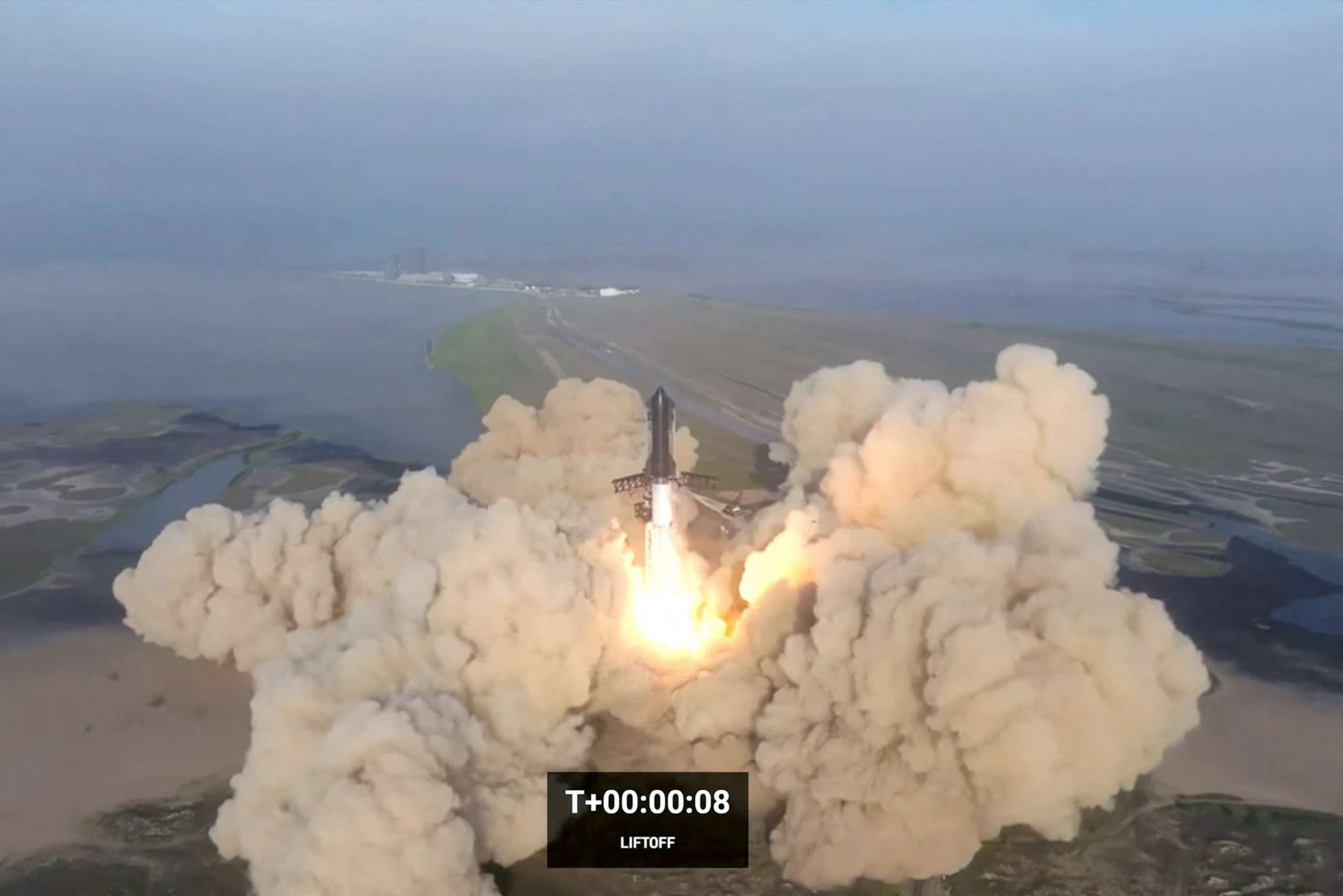Why SpaceX's Starship rocket matters even after self-destruction
The rocket could lower the costs of sending cargo into space.
About three minutes after SpaceX's Starship rocket launched Thursday morning, the boosters failed to separate, and it was forced to self-destruct.
Despite not going according to plan, SpaceX said it was still a successful first part of the mission, and CEO Elon Musk congratulated the team.
When Starship is eventually perfected, here's why the world's largest rocket will be so extraordinary:
Starship is designed to carry passengers to the moon and Mars as part of NASA's Artemis program, and eventually will take 100 people on long-duration, interplanetary flights.
In fact, Starship will be so cost-effective, it will eventually be able to deliver about 100 tons of cargo to any planet in the solar system, such as Mars, for as little as $50 million.

For comparison, the Space Shuttle, a reusable spacecraft system that NASA retired in 2011, cost $1.5 billion to lift only about one-quarter of what Starship will, and only into low Earth orbit.
Additionally, Starship will be reusable, meaning rapid turnaround and relaunch cycles. Eventually, multiple versions of the spacecraft could put 1 million tons of cargo into space in a year.
At that rate, launch costs would decrease roughly 100 times from what they are now and could even result in daily launches. That would mean launch costs could be driven down to about $23 a pound, making cost no longer a significant barrier of getting to space.
In the past, science has been limited to what can be flown into space because of launch size and weight restrictions. The massive size and power of Starship will make humans visiting the moon and Mars not only possible but financially sustainable, even for those who aren't among the very rich.
This could eventually lead to space tourism, with people paying money to visit hotels in space for the same cost as a plane ticket to Europe. Space experiments will be so inexpensive that a high school science class could design, build and send to space its own experiments.
The ability of Starship to take heavy loads, inexpensively, into space will open up not just the ability to colonize other planets, but it will create new opportunities for communications and Earth observation by taking tens of thousands of satellites into space for minimal cost. The number and types of satellites in orbit will no longer be limited by launch costs or the cargo bay of the rocket, often a big deterrent.

For those back on Earth, it will mean access to services like hyper-localized weather prediction, or crop health and yield affected by disease or drought before it becomes a problem. And video communication will be available anywhere on Earth for almost no cost.
On a macro level, this could also result in better earthquake prediction, air traffic control completely done from space, and navigation aids much better than today's GPS.
However, many of these ambitions are still several years away, so why does Starship matter now?
Because space is hard and requires failure to reach success. Today's launch will pave the way to eventual success that creates one of the most important scientific advances in the history of human civilization.
As Dr. Jennifer Heldmann, a research scientist at NASA, noted, "The SpaceX Starship system fundamentally changes the paradigm for NASA science, technology development and testing, and human exploration of space."



